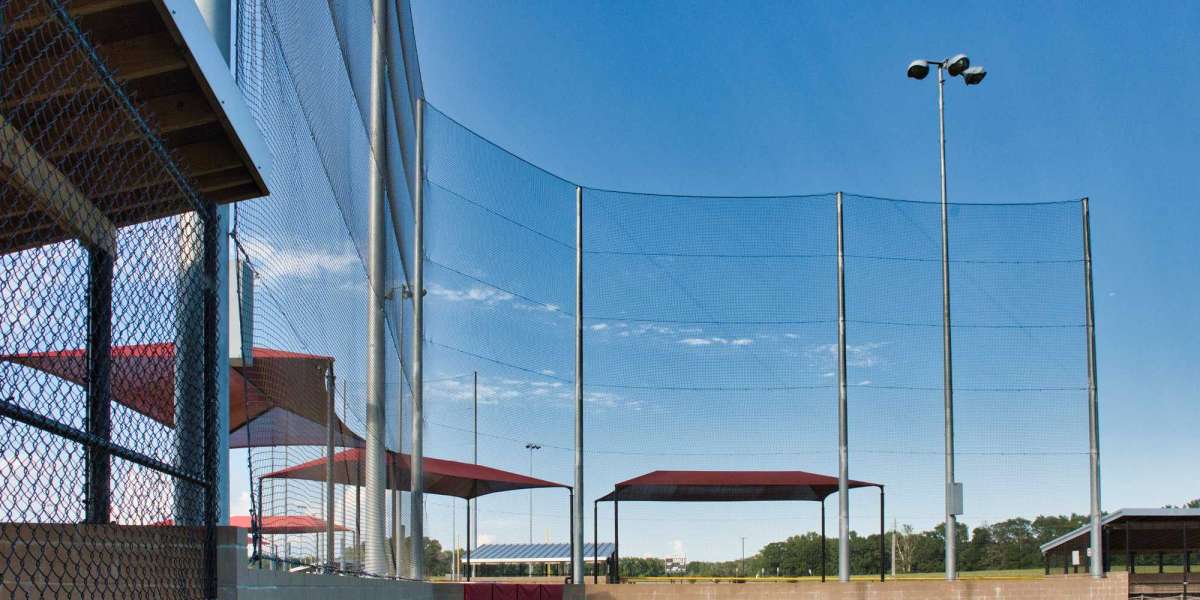When you think of sports essentials, you probably picture a ball, a bat, or maybe a racket. But behind every successful game or practice session lies an unsung hero: the sports net. Whether stretched across a tennis court, behind a baseball backstop, or surrounding a golf driving range, high-quality sports nets are essential for safety, performance, and durability.
In this article, we uncover the importance of investing in high-quality netting, the different types used across sports, and what features separate premium nets from budget options. Whether you're managing a professional facility, a school gym, or your own backyard training space, this guide will help you make informed, long-lasting decisions.
What Defines a High-Quality Sports Net?
All nets are not created equal. The difference between a low-cost net and a high-quality one is visible in how it performs, how long it lasts, and how well it withstands physical and environmental stress.
Key Qualities of a High-Quality Net:
Strength and Durability: Made from resilient materials like nylon or polyester that can handle impact without tearing.
Weather Resistance: Outdoor nets should be UV-treated and water-resistant to withstand sun, rain, and wind.
Precision Craftsmanship: Includes double-stitched borders, consistent mesh sizes, and professional-grade tension systems.
Purpose-Built Design: Engineered for the specific needs of each sport, from mesh size to material type.
High-quality nets deliver better performance, reduce maintenance costs, and improve safety on and off the field.
Why Quality Matters Across Sports
Each sport comes with unique demands on netting. Let’s explore how high-quality nets make a difference in various disciplines.
?️ Golf: Safety and Precision
Golf nets must catch balls traveling at over 100 mph. A subpar net could tear on impact or allow a ball to pass through.
Key Features:
Tight mesh (usually ¾” to 1”)
UV-protected HDPE or polyester
Reinforced edges to prevent sagging
Premium golf nets are essential for driving ranges, simulators, and backyard practice areas.
⚾ Baseball Softball: High Impact Protection
In baseball, a net must withstand repeated hits from fastballs and bats. Whether behind home plate or in a batting cage, net failure can be dangerous.
Key Features:
Knotted nylon (#36 or higher)
High abrasion resistance
Weather-treated for outdoor use
Quality nets ensure player safety and longevity in high-use facilities.
⚽ Soccer ? Football: Containment and Visibility
Soccer and football nets must endure repeated force from large balls while maintaining their form.
Key Features:
Large mesh (4” to 5”)
Weather-resistant polyethylene
Reinforced top and bottom cords
In professional and school-level games, a well-fitted, durable net improves gameplay and aesthetics.
? Volleyball ? Tennis: Tension and Consistency
In net sports, a sagging or uneven net affects performance and fairness. Tension and uniformity are critical.
Key Features:
Low-stretch polyester
Steel cables or durable rope for tension
Reinforced headbands
High-quality nets keep play fair and allow for accurate ball interaction.
Comparing Net Materials: What’s Best for Your Needs?
Understanding net materials is essential when choosing the right product for your sport and environment.
| Material | Best Use | Strength | Weather Resistance | Elasticity |
|---|---|---|---|---|
| Nylon | Indoor, high-impact sports | ★★★★★ | Moderate (needs treatment) | High |
| HDPE (Polyethylene) | Outdoor containment nets | ★★★★☆ | Excellent | Low |
| Polyester | Net games (tennis, volleyball) | ★★★★★ | Excellent | Low |
| Polypropylene | Light recreational use | ★★☆☆☆ | Fair | Moderate |
Each material has pros and cons. Nylon is strong but needs UV protection. HDPE excels outdoors, while polyester maintains shape and tension well.
Knotted vs. Knotless: What’s the Difference?
Another key decision is net construction — whether to choose knotted or knotless nets.
Knotted Nets:
Stronger due to traditional weave
Ideal for baseball, golf, and high-impact sports
Easier to repair
Knotless Nets:
Smoother, reducing abrasion (better for indoor or close-contact sports)
Lighter and more flexible
Often more expensive due to advanced weaving technology
Your sport and environment will determine which type is more suitable.
Professional vs. Recreational Grade Nets
Not all facilities need tournament-level nets, but understanding the difference helps you get the right value for your investment.
Professional Grade Nets:
Heavy-duty materials
Reinforced borders, corners, and tension systems
Designed to last years, even with heavy use
Used in stadiums, colleges, and commercial sports complexes
Recreational Grade Nets:
Lightweight, often made of polypropylene or thin nylon
Easier to install and take down
Shorter lifespan, ideal for home use or seasonal sports
Installation and Maintenance Tips
Even the best net won’t last without proper installation and upkeep.
Installation Best Practices:
Ensure even tension to prevent sagging
Use strong anchors or poles suitable for the net’s weight
Avoid overstretching, which causes premature wear
Maintenance Tips:
Regularly inspect for tears or fraying
Clean nets with water and mild detergent
Store indoors in off-seasons to prolong life
Re-tension every few months to maintain shape
Safety and Liability: A Hidden Benefit
In many public and professional environments, net failure isn’t just inconvenient — it’s a legal risk. A torn net at a baseball field or an unsecured barrier at a golf course can result in injury and liability. Investing in high-quality sports nets minimizes risk and ensures compliance with safety regulations.
Sustainable Choices: The Future of Sports Netting
As sustainability becomes a global priority, many manufacturers now offer:
Recycled material nets (e.g., from ocean plastics or PET bottles)
Non-toxic coatings
Modular net systems for replacing sections instead of whole nets
If your organization values eco-conscious operations, ask about green certifications or recycling programs.
Conclusion: High-Quality Nets Are More Than Just Equipment
A net might seem like a background component in the world of sports, but its importance is foundational. Whether it's catching a line drive, containing a soccer ball, or defining a tennis court, a high-quality sports net contributes to safety, efficiency, and professionalism in every game or practice.
Don’t cut corners. Choose the right material, construction, and fit — and invest in netting that works as hard as your team does.








